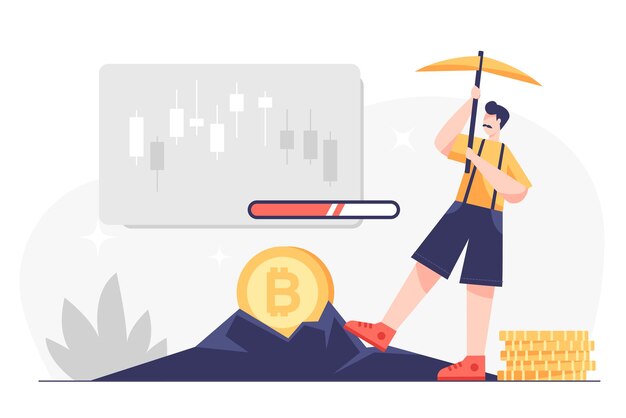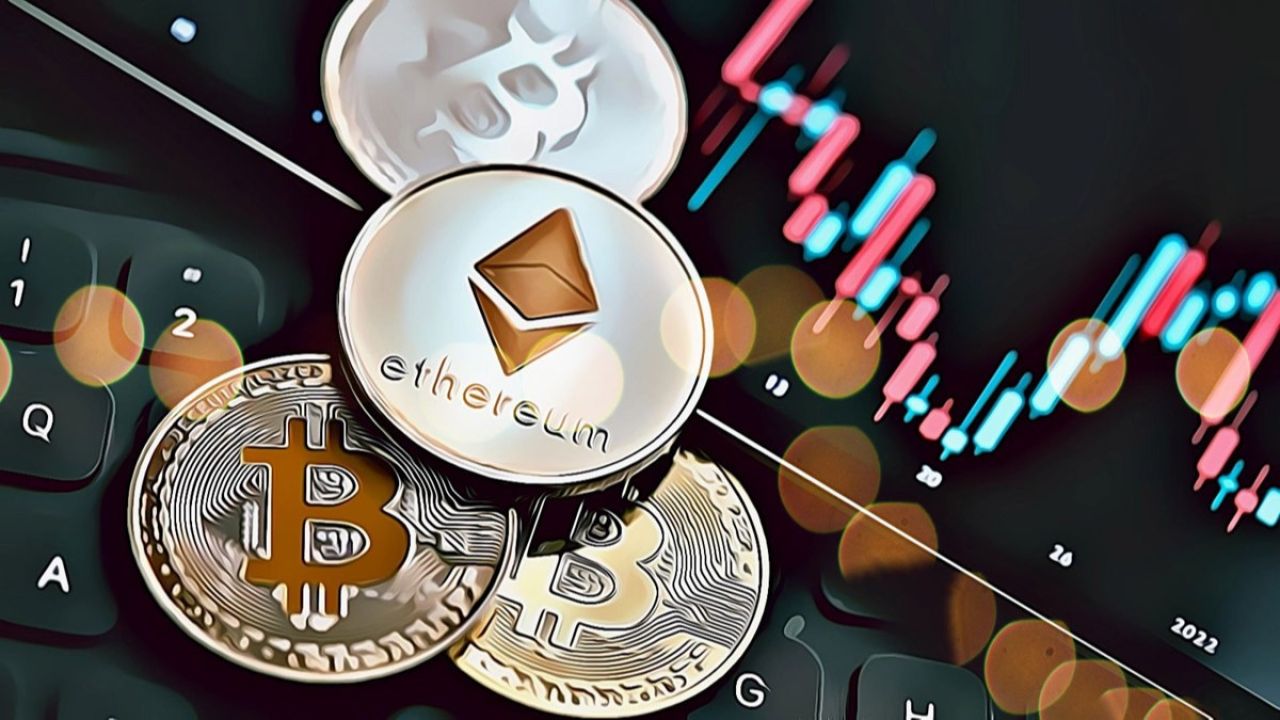Understanding Tether USDT – An In-depth Exploration of the Popular Stablecoin Driving Cryptocurrency Transactions
In the realm of cryptocurrency, there exists a digital asset that has both puzzled and intrigued investors and enthusiasts alike – Tether USDT. This enigmatic cryptocurrency has gained significant attention due to its unique features and controversial history. In this informative article, we delve into the depths of Tether USDT, shedding light on its inner workings and unraveling the complexities surrounding its creation and use.
As the cryptocurrency market continues to flourish, Tether USDT has emerged as a prominent player in the digital financial landscape. Acting as a bridge between traditional fiat currencies and the world of cryptocurrencies, Tether USDT promises stability and convenience. This cryptocurrency operates on the premise of being a stablecoin, pegged to the value of underlying fiat currencies, such as the US dollar, the euro, and the yen.
Unlike other volatile cryptocurrencies subject to frequent market fluctuations, Tether USDT claims to maintain a stable value, providing a reliable alternative for those seeking stability in their digital assets. With its revolutionary technology, Tether USDT enables seamless cross-border transactions without the need for traditional banking systems or intermediaries, making it an attractive option for individuals and businesses alike.
However, controversies and concerns have shrouded Tether USDT throughout its existence, raising questions about its credibility and transparency. Critics argue that Tether USDT lacks the necessary reserves to fully support its pegged value, fueling doubts about its true stability. Despite these controversies, Tether USDT continues to thrive, playing a crucial role in the cryptocurrency ecosystem and enticing individuals with its promise of stability amid a sea of volatility.
What is Tether USDT and how does it work?
Tether USDT is a digital currency that is designed to mimic the value of the US dollar. It operates on the blockchain technology, which allows for secure and transparent transactions. But how does Tether USDT actually work?
The Tether USDT Token
Tether USDT is a type of cryptocurrency known as a stablecoin. Unlike other cryptocurrencies like Bitcoin or Ethereum, which can have volatile prices, Tether USDT is designed to maintain a stable value equal to 1 US dollar.
Tether achieves this stability by pegging the value of each USDT token to its respective currency reserve. For every USDT in circulation, there should be an equivalent amount of US dollars held in reserve by Tether Limited, the company behind Tether USDT.
Ensuring Stability and Transparency
Tether USDT maintains its stability through various mechanisms. The main one is regular audits of its reserves to ensure that there are enough dollars backing the tokens in circulation. These audits are conducted by third-party accounting firms.
Additionally, Tether Limited publishes a breakdown of its reserves, showing the amount of dollars and other assets held. This transparency helps build trust among users and gives them confidence in the stability of Tether USDT.
Uses and Benefits of Tether USDT
Tether USDT has several use cases and benefits. One primary use is as a bridge between traditional financial systems and the world of cryptocurrencies. It provides a way for individuals and businesses to hold a digital asset that has a stable value and can easily be exchanged for other cryptocurrencies or fiat currencies.
Furthermore, Tether USDT offers a convenient and efficient way to move funds across different cryptocurrency exchanges. By using Tether USDT as an intermediary, users can avoid the fees and delays associated with traditional banking systems.
Overall, Tether USDT plays an essential role in the cryptocurrency ecosystem by providing stability, transparency, and utility for users and businesses.
The controversy surrounding Tether USDT
In recent times, Tether’s USDT has become a topic of heated debate and skepticism within the cryptocurrency community. There are concerns and allegations surrounding the stability, transparency, and legality of the stablecoin, creating a cloud of uncertainty around its usage and value.
One of the major controversies surrounding Tether USDT is its claim to be fully backed by USD reserves. Critics argue that there is insufficient evidence to verify these claims, leading to doubts about the cryptocurrency’s actual value and stability. This lack of transparency has raised questions about the legitimacy of Tether’s operations and its ability to maintain a 1:1 ratio with the US dollar.
Furthermore, Tether has been subject to scrutiny regarding its relationship with Bitfinex, a prominent cryptocurrency exchange. It is alleged that Tether’s parent company and Bitfinex have engaged in manipulative practices, such as artificially inflating Bitcoin prices using Tether. These allegations have fueled concerns about market manipulation and the potential risks associated with Tether’s dominance in the crypto market.
Legal issues have also contributed to the controversy surrounding Tether USDT. The stablecoin has faced allegations of operating without proper regulatory compliance, particularly in terms of money laundering and investor protection. These legal concerns have raised doubts about the long-term viability of Tether and the potential impact it could have on the overall stability of the cryptocurrency market.
In summary, the controversy surrounding Tether USDT stems from concerns over its backing, transparency, market manipulation, and regulatory compliance. These issues have created a wave of mistrust and uncertainty within the cryptocurrency community, making it crucial for investors and enthusiasts to thoroughly evaluate the risks associated with Tether before engaging in its usage.
The role of Tether USDT in the cryptocurrency market
Tether USDT plays a crucial role in the ever-evolving landscape of the cryptocurrency market. As a stablecoin, it offers a stable and reliable digital asset that is pegged to the value of a traditional fiat currency. This unique characteristic makes Tether USDT an indispensable tool for traders, investors, and businesses within the cryptocurrency ecosystem.
One of the primary roles of Tether USDT is to provide stability in a highly volatile market. Unlike other cryptocurrencies whose prices fluctuate wildly, Tether USDT maintains a 1:1 ratio with the corresponding fiat currency it represents. This stability allows individuals and businesses to trade and transact without the inherent risks associated with price volatility.
Furthermore, Tether USDT serves as a bridge between the traditional financial world and the emerging realm of cryptocurrencies. By enabling users to convert their fiat currencies into a digital equivalent, Tether USDT opens up avenues for easier entry into the cryptocurrency market. It offers a familiar and accessible means for individuals and institutions to participate in the decentralized economy.
Another important role of Tether USDT is its role as a liquidity provider. As one of the most widely used stablecoins, it offers a reliable store of value that can be quickly and efficiently utilized for trading, lending, and various financial activities within the cryptocurrency ecosystem. Its widespread acceptance and integration with popular exchanges and platforms make Tether USDT an essential component for maintaining liquidity in the market.
Overall, the role of Tether USDT in the cryptocurrency market is multi-faceted. It provides stability, acts as a bridge between traditional finance and cryptocurrencies, and serves as a vital source of liquidity. Its underlying success and widespread adoption highlight its significance in facilitating seamless and efficient transactions within the digital asset space.
Benefits and risks of using Tether USDT
In this section, we will explore the advantages and drawbacks of utilizing Tether USDT, a popular stablecoin in the cryptocurrency market. As with any financial instrument, there are both positive and negative aspects to consider when using Tether USDT.
Benefits of using Tether USDT
1. Stability: Tether USDT is designed to maintain a 1:1 ratio with the US dollar, providing stability to users. This can be advantageous when trading or investing in volatile cryptocurrency markets, as it allows individuals to hedge against price fluctuations.
2. Accessibility: Tether USDT is widely recognized and accepted across various cryptocurrency exchanges and platforms. This provides users with easy access to liquidity and enables seamless transfers between different cryptocurrencies.
3. Convenience: Tether USDT offers fast and low-cost transactions compared to traditional banking systems. This makes it an attractive option for individuals and businesses looking for efficient cross-border transactions or daily transactions.
Risks of using Tether USDT
1. Centralization: Tether USDT has faced criticism due to concerns over centralization. The company behind Tether, Tether Limited, claims to hold a reserve of US dollars equivalent to the amount of USDT in circulation. However, audits and transparency have been a subject of debate, leading to doubts about the actual value and backing of Tether USDT.
2. Regulatory uncertainty: As the cryptocurrency industry is still evolving, there is ongoing regulatory uncertainty surrounding stablecoins like Tether USDT. Changes in regulations or legal challenges could impact the usability and value of Tether USDT for users.
3. Counterparty risk: When using Tether USDT, users rely on the trustworthiness and financial stability of Tether Limited. If the company encounters financial difficulties or mismanagement, it could have a negative impact on the value and availability of Tether USDT.
It is essential for users to evaluate these benefits and risks carefully and consider their individual circumstances and risk tolerance before engaging in Tether USDT transactions.
Alternatives to Tether USDT for stablecoin transactions
When it comes to stablecoin transactions, there are several alternatives to Tether USDT that can provide stability, security, and convenience. These alternatives offer a range of features and benefits, allowing users to choose the option that best fits their needs.
1. USD Coin (USDC)
One popular alternative is USD Coin (USDC), a stablecoin that is backed by the US dollar on a 1:1 ratio. USDC offers transparency and regulatory compliance, as it is issued by regulated financial institutions and subject to regular audits. With its growing acceptance by cryptocurrency exchanges and merchants, USDC has gained traction as a reliable stablecoin for transactions.
2. Dai (DAI)
Another notable alternative is Dai (DAI), a stablecoin that operates on the Ethereum blockchain. Unlike Tether USDT and other fiat-backed stablecoins, Dai is not directly backed by any specific currency. Instead, it achieves stability through an algorithmic mechanism that involves collateralization with cryptocurrencies like Ether (ETH). The decentralized nature of Dai provides users with greater control and autonomy over their stablecoin transactions.
- Stability through algorithmic mechanism
- Decentralized control and autonomy
- Operates on the Ethereum blockchain
3. TrueUSD (TUSD)
TrueUSD (TUSD) is another stablecoin alternative that aims to provide a trustworthy and transparent stablecoin solution. Similar to Tether USDT, TrueUSD is backed by the US dollar on a 1:1 ratio. However, TrueUSD differentiates itself by maintaining regular third-party audits to verify its dollar backing. This added layer of transparency can give users confidence in the reliability of TrueUSD for stablecoin transactions.
- Backed by the US dollar
- Regular third-party audits for verification
- Increased transparency
Overall, these alternatives to Tether USDT present viable options for individuals and businesses seeking stablecoin transactions. Whether it’s the regulated nature of USD Coin (USDC), the algorithmic stability of Dai (DAI), or the transparency of TrueUSD (TUSD), users have a variety of choices to suit their specific needs and preferences.
Questions and answers: What is tether usdt
What is Tether USDT?
Tether USDT is a cryptocurrency that is pegged to the value of the US dollar. It is often referred to as a stablecoin because its value is designed to remain stable, unlike many other cryptocurrencies that experience considerable price volatility.
How does Tether USDT maintain its stability?
Tether USDT maintains its stability by being pegged to the value of the US dollar. For every Tether USDT token in circulation, there should be an equivalent amount of US dollars held in reserve. This is meant to ensure that the value of Tether USDT remains the same as the US dollar.
What are the benefits of using Tether USDT?
There are several benefits of using Tether USDT. Firstly, it allows users to move funds quickly and easily between different cryptocurrency exchanges without the need to use traditional banking systems. Additionally, Tether USDT provides a level of stability to cryptocurrency trading, as its value is pegged to the US dollar, reducing the impact of market volatility.
Are there any risks or concerns associated with Tether USDT?
Yes, there are some risks and concerns associated with Tether USDT. One concern is the transparency and accuracy of the reserves held to back each Tether USDT token. There have been debates and controversies regarding the auditing and verification of these reserves. Additionally, Tether Limited, the company behind Tether USDT, has faced legal and regulatory scrutiny which has raised concerns about the overall stability and trustworthiness of the cryptocurrency.
What is a tether token?
A tether token is a type of cryptocurrency known as a stablecoin, designed to maintain a stable value by being pegged to a fiat currency like the US dollar.
Where can I buy tether?
You can buy tether from various cryptocurrency exchanges that support the trading of USDT pairs, allowing users to purchase tether using other cryptocurrencies or fiat currencies.
What role do blockchains play in tether?
Tether tokens are typically issued on blockchains like Ethereum, Tron, and others, where they operate as digital assets with transparent transaction records and decentralized infrastructure.
What is the protocol behind tether?
The protocol behind tether involves the issuance and redemption of tokens, as well as the maintenance of reserves to ensure the stability of its value relative to the chosen fiat currency.
How is the market cap of tether calculated?
The market cap of tether is calculated by multiplying the total number of tether tokens in circulation by their current market price, representing the total value of all issued tokens.
What are cash equivalents in the context of tether?
Cash equivalents in the context of tether refer to the assets held in reserve to back the value of issued tokens, typically consisting of highly liquid and stable assets such as cash, short-term investments, and other financial instruments.
How does tether work?
Tether tokens are pegged to fiat currencies like the US dollar, meaning that each tether token is supposed to represent one unit of the underlying currency.
Who is the CEO of Tether?
The CEO of Tether is currently Paolo Ardoino, who oversees the operations and development of the stablecoin.
What is Tether pegged to?
Tether tokens are primarily pegged to the US dollar, making it a stablecoin designed to maintain a consistent value relative to the USD.
How can I buy USDT?
USDT can be purchased from various cryptocurrency exchanges that support trading pairs with tether, allowing users to exchange other cryptocurrencies or fiat currencies for USDT.
What factors affect the price of Tether?
The price of Tether is influenced by market demand, the stability of the US dollar, regulatory developments, and the overall confidence in the Tether platform.
Who regulates Tether?
Tether has faced regulatory scrutiny, including investigations by the New York Attorney General’s office, regarding its reserve holdings and transparency.
When was Tether created?
Tether was originally launched in 2014, with the aim of providing a stable digital currency alternative to traditional fiat currencies.
What makes Tether the largest stablecoin by market cap?
Tether’s large market cap is attributed to its widespread adoption, liquidity, and use as a stable trading pair on cryptocurrency exchanges worldwide.
Is Tether pegged to any other fiat currencies?
While Tether is primarily pegged to the US dollar, there are also versions of USDT pegged to other fiat currencies like the euro.
What is the significance of Tether in the cryptocurrency market?
Tether plays a crucial role in the cryptocurrency market by providing a stable trading pair and serving as a bridge between fiat currencies and cryptocurrencies for traders and investors.








No responses yet